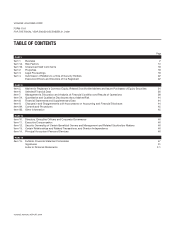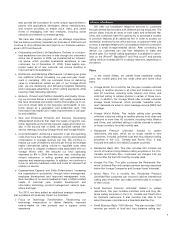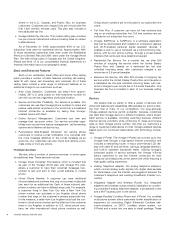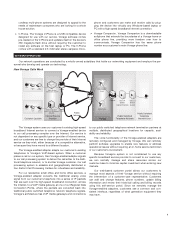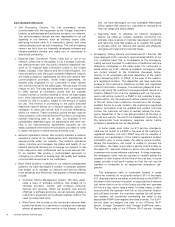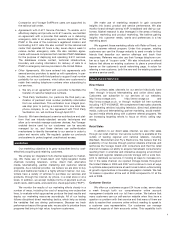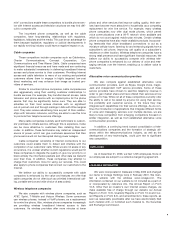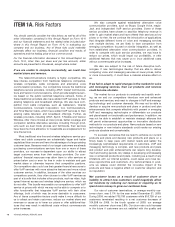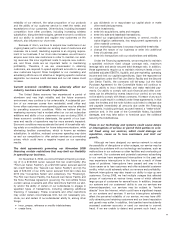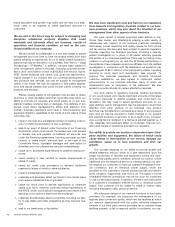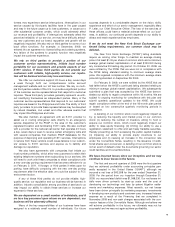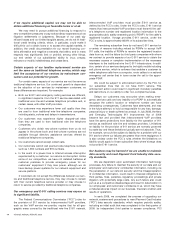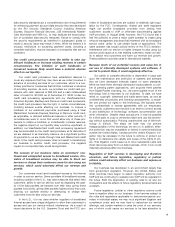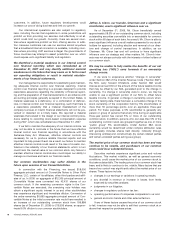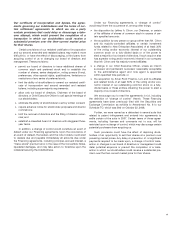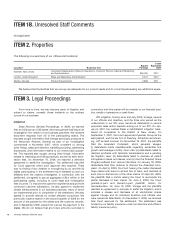Vonage 2009 Annual Report Download - page 16
Download and view the complete annual report
Please find page 16 of the 2009 Vonage annual report below. You can navigate through the pages in the report by either clicking on the pages listed below, or by using the keyword search tool below to find specific information within the annual report.
empowers our customers through self-service and reduces our
customer care expenses.
Customers who cannot or do not wish to resolve their ques-
tions through our website can contact a live customer care repre-
sentative through our toll free number. We staff our customer care
organization through a combination of our own employees and
outsourced customer care representatives. All new customer care
representatives are trained through an established program
developed by Vonage. We also have a separate team called
Advanced Technical Support for resolving customers’ complex
issues that could not be handled by our other representatives and
an onboarding queue, which provides specialized assistance to
new customers. We use extensive monitoring of call quality and
customer satisfaction scores to determine additional training or
coaching requirements for individual associates.
Billing
All customer billing is automated through our website. We
automatically collect all fees from our customers’ credit card,
debit card or ECP. By collecting monthly subscription fees in
advance and certain other charges immediately after they are
incurred, we are able to reduce the amount of accounts receivable
that we have outstanding, thus allowing us to have lower working
capital requirements. Collecting in this manner also helps us miti-
gate bad debt exposure, which is recorded as a reduction to
revenue. If a customer’s credit card, debit card or ECP is
declined, we generally suspend international calling. Historically,
in most cases, we are able to correct the problem with the
customer within the current monthly billing cycle. If the custom-
er’s credit card, debit card or ECP cannot be successfully proc-
essed during three billing cycles (i.e. the current and two
subsequent monthly billing cycles), we terminate the account.
In December 2009, we entered into a contract with Amdocs,
Inc. pursuant to which Amdocs, Inc. will (i) license to us billing and
ordering software, (ii) provide professional services relating to the
implementation, operation, support and maintenance of the
licensed systems and (iii) transition support services in connection
with migration to the licensed systems. We expect this software
to provide us with enhanced ordering and billing capabilities to
better suit the current and future needs of the business. The initial
term of the agreement with Amdocs, Inc. extends for five years
following the earlier to occur of (i) the date on which a specified
number of subscribers are successfully migrated from our current
billing and order systems to the licensed system or (ii) the first
new subscriber is added to the licensed system.
INTELLECTUAL PROPERTY
We believe that our technological position depends primarily
on the experience, technical competence and the creative ability
of our engineering and technology staff. We review our techno-
logical developments with our technology staff and business units
to identify the features of our core technology that provide us with
a technological or commercial advantage and file patent applica-
tions as necessary to protect these features in the United States
and internationally. Our company policies require our employees
to assign their intellectual property rights to us and to treat all
technology as our confidential information. We have been issued
three patents and have filed several other patent applications to
protect our technology, which are currently pending.
In addition to developing technology, we evaluate the licens-
ing and acquisition of intellectual property of others in order to
identify technology that provides us with a technological or
commercial advantage. In 2006, we acquired three patents from
Digital Packet Licensing Inc. that enable VoIP technology. The
patents are related to the compression of packetized digital sig-
nals commonly used in VoIP technology. Two of the patents have
expired, and the other patent expires in 2013.
We were named as a defendant in several suits that relate to
patent infringement and entered into settlement agreements in
2007 and 2008 to settle certain of the suits, which in certain cases
include payments, patent licenses and covenants not to sue.
We are the owner of numerous trademarks and service marks
and have applied for registration of our trademarks and service
marks in the United States and abroad to establish and protect
our brand names as part of our intellectual property strategy.
Some of our registered marks are Vonage®, Vonage Mobile®and
Vonage Visual Voicemail®.
We endeavor to protect our internally developed systems and
maintain our trademarks and service marks. Typically, we enter
into confidentiality or license agreements with our employees,
consultants, customers and vendors in an effort to control access
to and distribution of our technology, software, documentation
and other information.
COMPETITION
We face strong competition from incumbent telephone
companies, cable companies, alternative voice communication
providers and wireless companies. Because most of our target
customers are already purchasing communications services from
one or more of these providers, our success is dependent upon
our ability to attract these customers away from their existing
providers. We believe that the principal competitive factors affect-
ing our ability to attract and retain customers are price, call qual-
ity, customer service and enhanced services and features.
Incumbent telephone companies
The incumbent telephone companies are our primary com-
petitors and have historically dominated their regional markets.
These competitors include AT&T, Qwest Communications and
Verizon Communications as well as rural incumbents, such as
Frontier Communications. These competitors are substantially
larger and better capitalized than we are and have the advantage
of a large existing customer base.
In many cases, we charge prices that are significantly lower
than prices charged by the incumbent phone companies. We
believe that we currently compete successfully with the
incumbent phone companies on the basis of the features we offer
that they do not (such as area code selection and virtual phone
numbers) and features we offer at no extra charge.
The incumbent phone companies own networks that include
a “last mile” connection to substantially all of our existing and
potential customers as well as the places our customers call. As a
result, the vast majority of the calls placed by a Vonage customer
are carried over the “last mile” by an incumbent phone company,
and we indirectly pay access charges to these competitors for
each of these calls. In contrast, traditional wire line providers do
not pay us when their customers call our customers. Their “last
8VONAGE ANNUAL REPORT 2009



